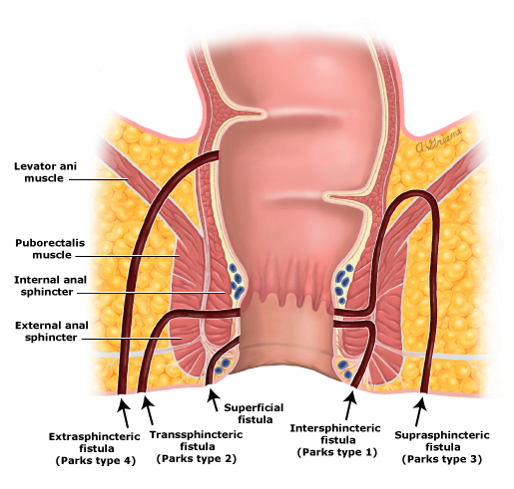Fistula Treatment in Bangalore
- Minimal Pain | No Stitches
- All Insurance Accepted
- No-Cost EMI

Book an Appointment .sticky-column{ position: sticky; position: -webkit-sticky; top: 3rem; }
Fistula
The leading causes of an anal fistula are clogged anal glands and anal abscesses. Other, much less common, conditions that can cause an anal fistula include:
- Pain
- Reddening of the skin
- Drainage of pus or blood from an opening in the skin
- Foul smell from draining pus
- Crohn’s disease (an inflammatory disease of the intestine)
- Radiation (treatment for cancer)
- Trauma
- Sexually transmitted diseases
- Tuberculosis
- Cancer
Signs and Symptoms
When it’s infected, a pilonidal cyst becomes a swollen mass (abscess). Signs and symptoms of an infected pilonidal cyst include:
- Pain and swelling around the anus
- Bloody or foul-smelling drainage (pus) from an opening around the anus. The pain may decrease after the fistula drains.
- Irritation of the skin around the anus from drainage
- Pain with bowel movements
- Bleeding
- Fever, chills and a general feeling of fatigue

Diagnosis
Your doctor can usually diagnose an anal fistula by examining the area around the anus. He or she will look for an opening (the fistula tract) on the skin. In many cases, there will be drainage from the external opening.
Some fistulas may not be visible on the skin’s surface. In this case, your physician may need to perform additional tests:
- An anoscopy is a procedure in which a special instrument is used to see inside your anus and rectum.
- Your physician may also order an ultrasound or MRI of the anal area to get a better view of the fistula tract.
- Surgery is almost always necessary to cure an anal fistula. The surgery is performed by a colon and rectal surgeon. The goal of the surgery is a balance between getting rid of the fistula while protecting the anal sphincter muscles, which could cause incontinence if damaged.
- Fistulas in which there is no or little sphincter muscle involved are treated with a fistulotomy. In this procedure, the skin and muscle over the tunnel are lay open to convert it from a tunnel to an open groove. This allows the fistula tract to heal from the bottom up.
